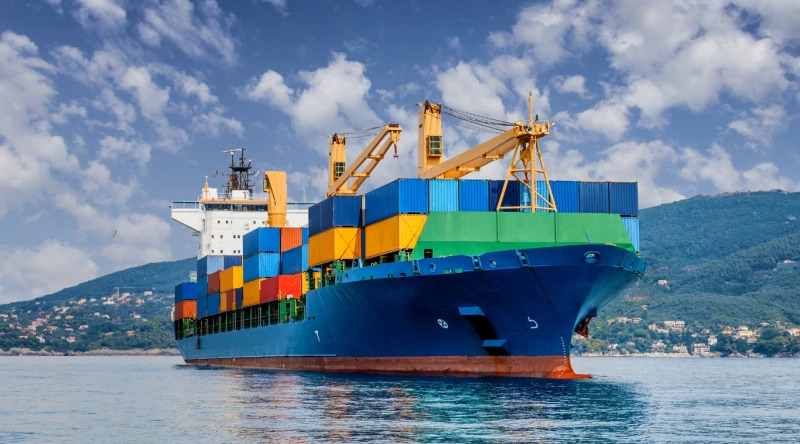The global shipping industry, traditionally seen as conservative in its use of technology, is witnessing a revolution in logistics. As e-commerce expands, environmental regulations become more stringent, and supply chain resilience becomes a top priority, innovation has become indispensable. The convergence of digital technology, automation, and green energy is creating a smarter, cleaner, and more connected maritime sector.
Here are six cutting-edge technological innovations that are driving the transformation of the shipping industry, shaping the way goods are transported across oceans and continents.
Autonomous freight trains and AI navigation
Autonomous cargo ships are moving from concept to commercial reality. These ships are equipped with artificial intelligence-powered navigation systems that make real-time decisions based on sensor data, satellite imagery, and machine learning algorithms. Some ships can operate with minimal crew, or even completely remotely.
This technology helps reduce human error and accident rates, cut crew-related operating costs, and optimize fuel consumption through real-time route planning. In addition, AI supports predictive maintenance, helping ships identify and fix technical problems before they cause delays or hazards. As more ports and maritime agencies adopt this technology, the autonomous ship sector is expected to grow significantly over the next five years.

Autonomous freight trains guided by AI will be applied in practice to reduce accidents and cut operating costs. Photo: TLI Magazine
Harnessing Wind Power and Moving to Sustainable Shipping
As the industry moves towards decarbonisation, shipping is turning to wind power in a more modern way. Technologies such as rigid sails, kite systems and rotor sails are offering environmentally friendly propulsion solutions.
For example, Oceanbird’s rigid sail design can reduce emissions by up to 90%; Airseas’ kite system saves fuel by harnessing high-level airflow; and Norsepower’s rotor sails have been installed on many large cargo ships. These innovations not only reduce dependence on fossil fuels but are also in line with the International Maritime Organization’s (IMO) 2030 carbon emission reduction targets. Hybrid propulsion and wind systems also give ships greater flexibility when operating in different weather conditions.
5G connectivity and smart port infrastructure
More and more ports are adopting 5G networks to support the development of next-generation smart infrastructure. High-speed, low-latency connections enable seamless communication between ships, port authorities and cargo handling staff.
5G networks enable infrastructure upgrades such as automated cranes, remote equipment control, live video surveillance and real-time cargo traffic updates. The integration of 5G with autonomous ships and smart logistics centers will shorten cargo handling times, enhance security and the ability to respond flexibly to disruptions. Pioneering ports such as Freeport of Riga (Latvia) and Rotterdam (Netherlands) have invested heavily in smart infrastructure systems using 5G platforms.
Tracking cargo with IoT and RFID
Real-time cargo tracking is no longer a convenience but has become a mandatory standard in the global logistics industry. Thanks to IoT sensors and RFID tags, shipping companies can monitor the status, journey and security of cargo from the moment it leaves the dock to the moment it reaches the recipient.
These technologies provide continuous data on temperature, humidity, impact and cargo location; and help speed up customs clearance thanks to transparent shipping history. Proactive monitoring also significantly reduces loss and damage to cargo. When combined with a blockchain-based supply chain, the system also increases transparency and trust between parties in the global shipping network.
Electric and hybrid ships
Electric propulsion ships are becoming a trend as the shipping industry aims to achieve zero emissions. While deployment on long-distance shipping remains challenging, coastal and inland routes are seeing an explosion in electric and hybrid ships.
Some notable developments include: fully electric container ships have begun operating in Northern Europe; hybrid systems combining LNG or biofuel engines with electric motors; and solutions to power ships from land while at anchor, reducing emissions at ports. These are key technologies to realize proposed zero-emission transport corridors in Europe and Asia.
Drone applications in maritime logistics
Drones are improving the ability to deliver final stages of goods at sea, increasing the speed and flexibility of maritime logistics. This is a particularly effective solution for high-value or urgent shipments where traditional docking is too slow or costly.
Drones are used to deliver spare parts or documents to anchored ships, transport emergency medical supplies to remote areas, or inspect maritime infrastructure. This solution not only shortens the time it takes to move goods, but also reduces the environmental impact, especially in crowded or complex areas. Many large ports and logistics companies have incorporated drone delivery into their daily operations.
Today’s global shipping industry is no longer just about giant container ships, but also a symbol of a smart, green, and adaptive logistics ecosystem. The combination of AI, renewable energy, wireless connectivity, and automation is helping to build a maritime industry that is ready for the 21st century. Investing in advanced technologies not only improves operational efficiency, but also helps the industry meet increasing environmental and regulatory expectations.